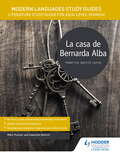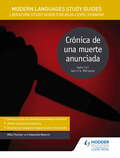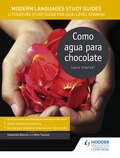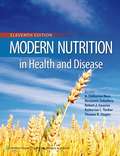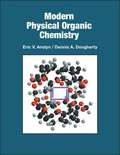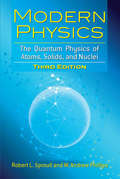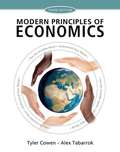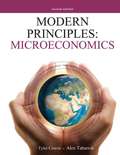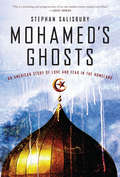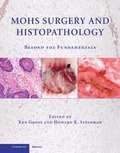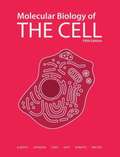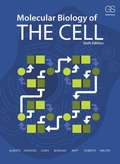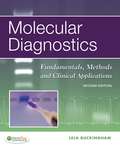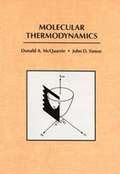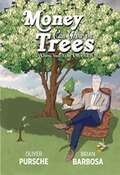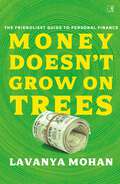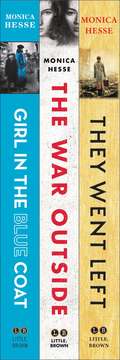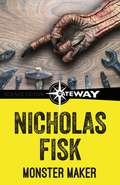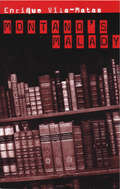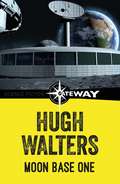- Table View
- List View
Modern Languages Study Guides: Literature Study Guide for AS/A-level Spanish
by Mike Thacker Sebastian BianchiExam Board: AQA, Edexcel, OCR & WJECLevel: AS/A-levelSubject: Modern LanguagesFirst Teaching: September 2017First Exam: June 2018Literature analysis made easy. Build your students' confidence in their language abilities and help them develop the skills needed to critique their chosen work: putting it into context, understanding the themes and narrative technique, as well as specialist terminology.Breaking down each scene, character and theme in La casa de Bernarda Alba (The House of Bernarda Alba), this accessible guide will enable your students to understand the historical and social context of the play and give them the critical and language skills needed to write a successful essay.- Strengthen language skills with relevant grammar, vocab and writing exercises throughout- Aim for top marks by building a bank of textual examples and quotes to enhance exam response- Build confidence with knowledge-check questions at the end of every chapter- Revise effectively with pages of essential vocabulary and key mind maps throughout- Feel prepared for exams with advice on how to write an essay, plus sample essay questions, two levels of model answers and examiner commentary
Modern Languages Study Guides: Literature Study Guide for AS/A-level Spanish
by Mike Thacker Sebastian BianchiLiterature analysis made easy. Build your students' confidence in their language abilities and help them develop the skills needed to critique their chosen work: putting it into context, understanding the themes and narrative technique, as well as specialist terminology.Breaking down each scene, character and theme in Crónica de una muerte anunciada (Chronicle of a Death Foretold), this accessible guide will enable your students to understand the historical and social context of the novel and give them the critical and language skills needed to write a successful essay.- Strengthen language skills with relevant grammar, vocab and writing exercises throughout- Aim for top marks by building a bank of textual examples and quotes to enhance exam response- Build confidence with knowledge-check questions at the end of every chapter- Revise effectively with pages of essential vocabulary and key mind maps throughout- Feel prepared for exams with advice on how to write an essay, plus sample essay questions, two levels of model answers and examiner commentary
Modern Languages Study Guides: Literature Study Guide for AS/A-level Spanish
by Mike Thacker Sebastian BianchiLiterature analysis made easy. Build your students' confidence in their language abilities and help them develop the skills needed to critique their chosen work: putting it into context, understanding the themes and narrative technique, as well as specialist terminology.Breaking down each scene, character and theme in Como agua para chocolate, this accessible guide will enable your students to understand the historical and social context of the novel and give them the critical and language skills needed to write a successful essay.- Strengthen language skills with relevant grammar, vocab and writing exercises throughout- Aim for top marks by building a bank of textual examples and quotes to enhance exam response- Build confidence with knowledge-check questions at the end of every chapter- Revise effectively with pages of essential vocabulary and key mind maps throughout- Feel prepared for exams with advice on how to write an essay, plus sample essay questions, two levels of model answers and examiner commentary
Modern Nutrition in Health and Disease (11th Edition)
by A. Catharine Ross Benjamin Caballero Robert J. Cousins Katherine L. Tucker Thomas R. ZieglerThis book offers complete, authoritative reference on nutrition and its role in contemporary medicine, dietetics, nursing, public health, and public policy.
Modern Physics: The Quantum Physics of Atoms, Solids, and Nuclei: Third Edition (Dover Books on Physics)
by W. Andrew Phillips Robert L. SproullThis introduction to the concepts and methods of quantum mechanics employs the analysis of one-dimensional problems to offer students a quantitative understanding of atomic, molecular, solid-state, and nuclear physics. Applications of these concepts and methods help answer the most intriguing questions of modern physics: What holds matter together? Holds it apart? How does the variety of chemical properties of different elements arise? How do electrons move through solids? Why do nuclei that occur in nature possess only certain combinations of protons and neutrons? The text presents meaningful problems by topic -- supplemented by ample illustrations, applications, and exercises -- that address the most intriguing questions of modern physics. Answers to selected problems appear in the appendix. Geared toward science and engineering majors, this volume is also appropriate for independent study by those who have completed a general physics course.
Modern Poems: An Introduction to Poetry
by Richard Ellmann Robert O'ClairAnthology designed for undergraduate poetry courses. Drawn from modern verse in English, covering Walt Whitman to the present.
Modern Principles of Economics (Third Edition)
by Tyler Cowen Alex TabarrokEngaging and provocative writing, as well as a knack for revealing the 'invisible hand' of economics at work have made Cowen and Tabarrok's Modern Principles of Economics a singularly distinctive and effective textbook for the principles course.
Modern Principles: Microeconomics (Second Edition)
by Tyler Cowen Alex TabarrokThe book explains how markets generate cooperation from people across the world, how prices act as signals and coordinate appropriate responses to changes in economic conditions, and how profit maximization leads to the minimization of industry costs.
Mohamed's Ghosts: An American Story of Love and Fear in the Homeland
by Stephan SalisburyMohamed Ghorab had no hint one late spring morning in May 2004 that when he dropped his daughter off at school, his life would change forever. Federal agents and police surrounded him in front of terrified parents, teachers, and school children. They hustled him off to jail and eventually deported him. His wife, bewildered and astonished,was detained at the same time,. Moments later, agents raided the obscure Philadelphia mosque where Ghorab was imam, ransacking its simple interior and his house next door. Over the next several months, members of Ghorab’s congregation would be arrested and detained, interrogated and watched. Many would be deported. Others would flee the neighborhood and the country as their lives became riddled with rumor. Informants seemed to be listening everywhere. Husbands were separated from wives. Children were torn from parents. The mosque collapsed in a sea of debt and anxiety. The neighborhood lost something essential--trust and community. This was a jumpy and fearful time in the life of America following 9/11, as prize-winning reporter Stephan Salisbury well knew. But he did not anticipate the extremity of fear that emerged as he explored the aftermath of that virtually forgotten raid. Over time, the members of the mosque and the imam’s family gradually opened up to him, giving Salisbury a unique opportunity to chronicle the demolition of lives and families, the spread of anti-immigrant hysteria, and its manipulation by the government. As he explores events centered on what he calls “the poor streets of Frankford Valley” in Philadelphia, or the empty streets of Brooklyn , or the fear-encrusted precincts of Lodi, California and beyond, Salisbury is constantly reminded of similar incidents in his own past--the paranoia and police activity that surrounded his political involvement in the 1960s, and the surveillance and informing that dogged his father, a well-known New York Times reporter and editor, for half a century. Salisbury weaves these strands together into a personal portrait of an America fracturing under the intense pressure of the war on terror--the Homeland in the time of Osama.
Mohs Surgery And Histopathology: Beyond The Fundamentals
by Ken Gross Howard K. SteinmanMohs surgery is a highly effective treatment for certain cutaneous and oral pharyngeal cancers. The procedure allows for the precise and complete removal of cancers while preserving significant amounts of normal tissue. Through the presentation and orientation of the specimens' complete surgical margin on pathology slides, the location of tumor foci and other relevant findings can be correlated with their locations on the surgical wound. The ability to create perfect slides for histological examination lies at the core of effective Mohs surgery. These procedures have a 99 percent cure rate for certain cancers when implemented correctly. This book describes the methods the dermatologist, pathologist, or technician can use to optimize the Mohs technique and produce the highest-quality slides and highest cure rates possible.
Molecular Biology of the Cell
by Keith Roberts Hunt Alexander Johnson Julian Lewis Martin Raff Peter WalterFor nearly a quarter century Molecular Biology of the Cell has been the leading cell biology textbook. This tradition continues with the new Fifth Edition, which has been completely revised and updated to describe our current, rapidly advancing understanding of cell biology. To list but a few examples, a large amount of new material is presented on epigenetics; stem cells; RNAi; comparative genomics; the latest cancer therapies; apoptosis (now its own separate chapter); and cell cycle control and the mechanics of M phase (now integrated into one chapter). The hallmark features of Molecular Biology of the Cell have been retained, such as its consistent and comprehensive art program, clear concept headings, and succinct section summaries. Additionally, in response to extensive feedback from readers, the Fifth Edition now includes several new features. It is now more portable. Chapters 1-20 are printed and Chapters 21-25, covering multicellular systems, are provided as PDF files on the free Media DVD-ROM which accompanies the book. * And for the first time, Molecular Biology of the Cell now contains end-of-chapter questions. These problems, written by John Wilson and Tim Hunt, emphasize a quantitative approach and the art of reasoning from experiments, and they will help students review and extend their knowledge derived from reading the textbook. The Media DVD-ROM, which is packaged with every copy of the book, contains PowerPoint(r) presentations with all of the figures, tables and micrographs from the text (available as JPEGs too). Also included is the Media Player, which plays over 125 movies animations, videos, and molecular models all with voice-over narration. A new reader-friendly feature is the integration of media codes throughout the text that link directly to relevant videos and animations. The Media DVD-ROM holds the multicellular systems chapters (21-25) of the text as well. By skillfully extracting the fundamental concepts from this enormous and ever-growing field, the authors tell the story of cell biology, and thereby create a coherent framework through which readers may approach and enjoy this subject that is so central to all of biology. * There is also a reference edition of Molecular Biology of the Cell, Fifth Edition (ISBN 978-0-8153-4111-6) that contains Chapters 1-25 entirely in printed format.
Molecular Biology of the Cell, Sixth Edition
by Keith Roberts David Morgan Alexander Johnson Julian Lewis Martin Raff Peter Walter Bruce AlbertsAs with previous editions, Molecular Biology of the Cell, Sixth Edition accomplishes this goal with clear writing and beautiful illustrations. The Sixth Edition has been extensively revised and updated with the latest research in the field of cell biology, and it provides an exceptional framework for teaching and learning.
Molecular Diagnostics: Fundamentals, Methods and Clinical Applications (Second Edition)
by Lela BuckinghamThe textbook, written for students enrolled for Clinical Laboratory Science/Medical Technology programs, explains the principles of molecular technology that are used for diagnostic purposes.
Molecular Thermodynamics
by Donald A. Mcquarrie John D. SimonThis text covers the principles of quantum mechanics before engaging those ideas in the subsequent development of thermodynamics. It includes worked examples and chapter-ending problems with solutions.
Money Can Grow on Trees: When you take care of it!
by Oliver PurscheFinancial Literacy has suddenly become a hot new topic in high schools and at the college level. Money Can Grow on Trees is perfectly timed for this conversation as the author explains in clear and concise language how the world of credit cards, loans, and money management can and do have a life-long impact on the lives of students and adults everywhere. Oliver Pursche uses real-world people and scenarios as educational foundations for teaching the concepts of how not to be afraid of money.
Money Doesn't Grow on Trees: The Friendliest Guide to Personal Finance
by Lavanya MohanMoney Doesn&’t Grow on Trees is the personal finance book that finally gets you. No jargon, no condescension—just practical personal finance wrapped in stories, pop culture references, and the occasional meme. Money shouldn&’t be a source of stress and personal finance shouldn&’t feel like a second job. Whether it&’s budgets, bank accounts, taxes, investing, or insurance, this book breaks it all down in the context of your life. We&’re tackling everything—from Instagram-fueled spending habits, to negotiating pay checks, to bad money decisions in relationships, to planning for kids, and even plotting a great escape from the 9-to-5. Plus, there are expert insights and real-life anecdotes that make all those 'big, scary' financial concepts feel like things you can understand, and—dare we say—enjoy. By the end of this book, you won&’t just know how money works—you&’ll know how to make it work for you.
Money and Banking
by Robert E. WrightThe financial crisis of 2007-8 has already revolutionized institutions, markets, and regulation. Wright's Money and Banking V 2.0 captures those revolutionary changes and packages them in a way that engages undergraduates enrolled in Money and Banking and Financial Institutions and Markets courses.
Money and Banking
by Robert E. WrightThe financial crisis of 2007-8 has already revolutionized institutions, markets, and regulation. Wright's Money and Banking V 2.0 captures those revolutionary changes and packages them in a way that engages undergraduates enrolled in Money and Banking and Financial Institutions and Markets courses.
Money and Banking
by Robert E. WrightThe financial crisis of 2007-8 has already revolutionized institutions, markets, and regulation. Wright's Money and Banking V 2.0 captures those revolutionary changes and packages them in a way that engages undergraduates enrolled in Money and Banking and Financial Institutions and Markets courses.
Money and Banking v 2.0
by Robert E. WrightThe financial crisis of 2007-8 has already revolutionized institutions, markets, and regulation. Wright's Money and Banking V 2.0 captures those revolutionary changes and packages them in a way that engages undergraduates enrolled in Money and Banking and Financial Institutions and Markets courses. Minimal mathematics, accessible language, and a student-oriented tone ease readers into complex subjects like money, interest rates, banking, asymmetric information, financial crises and regulation, monetary policy, monetary theory, and other standard topics. Numerous short cases, called "Stop and Think" boxes, promote internalization over memorization. Exercise drills ensure basic skills competency where appropriate. Short, snappy sections that begin with a framing question enhance readability and encourage assignment completion. The 2.0 version of this text boasts substantive revisions (additions, deletions, rearrangements) of almost every chapter based on the suggestions of many Money and Banking instructors. Some specific highlights are: Chapter 11 now contains enhanced descriptions of recent regulatory changes, including Dodd-Frank, Chapter 12 is an entirely new chapter on derivatives covering forwards, futures, options, and swaps that also including comprehensive treatment of the causes and consequences of financial crises, and Chapter 14 has updated discussions of the Federal Reserve's monetary policy tools, including paying interest on reserves, and the structure and leadership of the European Central Bank. Recent financial turmoil has increased student interest in the financial system but simultaneously threatens to create false impressions and negative attitudes. This up-to-date text by a dynamic, young author encourages students to critique the financial system without rejecting its many positive attributes. Peruse the book online now to see for yourself if this book fits the needs of your course and students.
Monica Hesse Collection
by Monica HesseRead all three masterworks of historical fiction from award-winning and New York Times bestselling author Monica Hesse.In Girl in the Blue Coat, Hanneke navigates Amsterdam at the height of World War II, spending her days procuring and delivering sought-after black market goods to paying customers, her nights hiding the true nature of her work from her concerned parents, and every waking moment mourning her boyfriend, who was killed on the Dutch front lines when the Germans invaded. On a routine delivery, a client asks Hanneke for help. Expecting to hear that Mrs. Janssen wants meat or kerosene, Hanneke is shocked by the older woman's frantic plea to find a person -- a Jewish teenager Mrs. Janssen had been hiding, who has vanished without a trace. Beautifully written, intricately plotted, and meticulously researched, Girl in the Blue Coat is an extraordinary novel about bravery, grief, and love in impossible times.In The War Outside, World War II is raging across Europe and the Pacific. The war seems far away from Margot in Iowa and Haruko in Colorado -- until they are uprooted to Crystal City, Texas, a "family internment camp," all because of the places their parents once called home: Germany and Japan. With everything around them falling apart, Margot and Haruko find solace in their growing, secret friendship. But in a prison the government has deemed full of spies, can they trust anyone -- even each other?In They Went Left, eighteen-year-old Zofia Lederman has barely begun to heal from the horrors of the Holocaust. Three years ago, she and her younger brother, Abek, were the only members of their family to be sent to the right, away from the gas chambers of Auschwitz-Birkenau. Everyone else -- her parents, her grandmother, radiant Aunt Maja -- they went left. Zofia's last words to her brother were a promise: Abek to Zofia, A to Z. When I find you again, we will fill our alphabet. Now her journey to fulfill that vow takes her through Poland and Germany, and into a displaced persons camp where everyone she meets is trying to piece together a future from a painful past. But the deeper Zofia digs, the more impossible her search seems. How can she find one boy in a sea of the missing? In the rubble of a broken continent, Zofia must delve into a mystery whose answers could break her -- or help her rebuild her world.
Monster Maker
by Nicholas FiskWhen 14 year old Matt lands a job with his hero - world-famous monster maker, Chancey Balogh - he can't believe his luck! Chancey has made lifesize mechanical monsters for Hollywood blockbusters and his reputation for scaring the living daylights out of audiences is legendary. But as soon as he starts work, Matt is plagued by bad luck. First some local boys get wind of his new job and his new money and decide to launch a full-on bullying campaign and then one night they break into the studios, determined to sabotage years of skilled craftsmanship. In a terrifying ordeal, where Matt suffers severe hallucinations, he sees the monsters come to life. But when he recovers from his concussion he cannot tell whether this actually happened or not. And neither can we . . .
Montano's Malady
by Enrique Vila-Matas Jonathan DunneA quirky, cosmopolitan novel about life and literature by the prize-winning Spanish writer Enrique Vila-Matas, author of Bartleby & Co. The narrator of Montano’s Malady is a writer named Jose who is so obsessed with literature that he finds it impossible to distinguish between real life and fictional reality. Part picaresque novel, part intimate diary, part memoir and philosophical musings, Enrique Vila-Matas has created a labyrinth in which writers as various as Cervantes, Sterne, Kafka, Musil, Bolano, Coetzee, and Sebald cross endlessly surprising paths. Trying to piece together his life of loss and pain, Jose leads the reader on an unsettling journey from European cities such as Nantes, Barcelona, Lisbon, Prague and Budapest to the Azores and the Chilean port of Valparaiso. Exquisitely witty and erudite, it confirms the opinion of Bernardo Axtaga that Vila-Matas is "the most important living Spanish writer."
Moon Base One
by Hugh WaltersIn Operation Columbus a landing was made on the Moon. But the mystery of those sinister domes that had suddenly appeared there - and of the evil grey mist that gathered so unaccountably now and then - was as far from a solution as ever. There was only one possible course of action: to establish a permanent base. And once that was decided there wasn't much doubt that young Chris Godfrey would be sent to man it. But this time he isn't alone in his rocket. His old friends Serge and Norrey are with hi,' and he's got a new friend - young Tony whose very life may depend on the expedition's success. In charge of the whole fantastic project is Sir Leo Frayling, cold-blooded and ruthless as ever; and, of course, Sir George Benson and Whiskers Greatrex play their part too.
